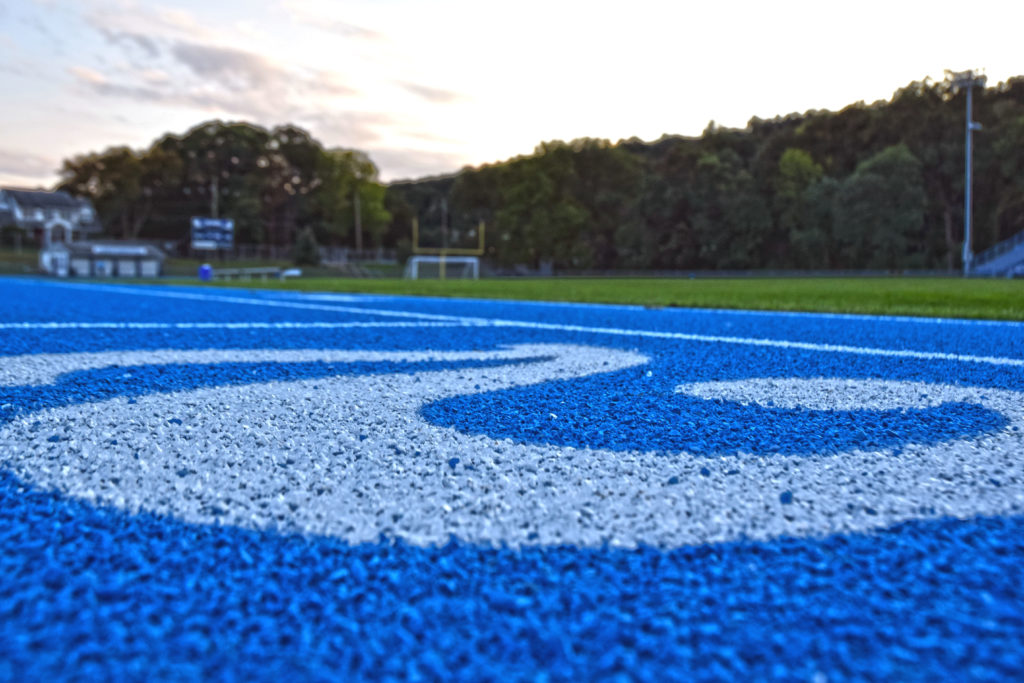Introduction
Poly track, a revolutionary innovation in sports surface technology, has transformed athletic performance and safety. It combines durability, performance, and versatility, making it an ideal choice for various sports and recreational activities. This comprehensive guide delves into the world of polytrack, exploring its benefits, applications, and maintenance.
The Origins of Poly Track
Historical Background
Polytrack surfaces emerged in response to the need for more durable and safe athletic tracks. Traditional cinder and grass tracks posed numerous challenges, including maintenance difficulties and inconsistent performance. Polytrack was developed as a solution, offering a more reliable and efficient alternative.
Evolution of Track Surfaces
The evolution from traditional surfaces to polytrack marks a significant advancement in sports infrastructure. Over the years, improvements in materials and installation techniques have enhanced the performance and longevity of polytrack surfaces, making them the standard in modern athletics.
Benefits of Poly Track
Enhanced Performance
Poly track surfaces provide superior traction and shock absorption, contributing to better athletic performance. The consistent surface reduces the risk of injuries and allows athletes to train and compete at their best.
Durability and Longevity
One of the standout features of polytrack is its durability. Unlike traditional surfaces, polytrack withstands harsh weather conditions and heavy use, ensuring a longer lifespan with minimal maintenance.
Applications of Poly Track
Athletic Tracks
Poly track is widely used in athletic tracks for schools, colleges, and professional sports facilities. Its reliable performance makes it a favorite among athletes and coaches.
Recreational Areas
Beyond competitive sports, polytrack is also popular in recreational areas. Parks, playgrounds, and community centers benefit from its safe and durable surface, providing a versatile space for various activities.
Installation Process
Preparing the Site
Proper site preparation is crucial for a successful polytrack installation. This involves clearing the area, leveling the ground, and ensuring proper drainage to prevent water accumulation.
Laying the Surface
The poly track surface is laid in multiple layers, each contributing to the overall performance and durability. The process involves precision and expertise to ensure a smooth and consistent surface.
Maintenance of Poly Track
Regular Cleaning
Regular cleaning is essential to maintain the integrity of the polytrack surface. Removing debris and dirt helps preserve the surface quality and ensures optimal performance.
Periodic Inspections
Periodic inspections identify potential issues before they become major problems. Checking for cracks, wear, and drainage problems helps in timely maintenance and extends the track’s lifespan.
Innovations in Poly Track Technology
Material Advancements
Advancements in materials have significantly improved polytrack surfaces. Modern poly tracks incorporate eco-friendly and high-performance materials that enhance durability and reduce environmental impact.
Technological Integration
The integration of technology, such as smart sensors and performance monitoring systems, is revolutionizing polytrack surfaces. These innovations provide real-time data on usage and conditions, aiding in better maintenance and performance analysis.
Environmental Impact
Sustainable Materials
Poly track surfaces are increasingly being made with sustainable materials. This reduces the environmental footprint and aligns with global efforts toward sustainability in sports infrastructure.
Eco-Friendly Installation Practices
Eco-friendly installation practices, such as using recycled materials and minimizing waste, contribute to the overall sustainability of poly track surfaces.
Case Studies
Successful Implementations
Numerous successful implementations of poly track surfaces around the world showcase their benefits. From Olympic stadiums to local community tracks, these case studies highlight the versatility and performance of polytrack.
Lessons Learned
Lessons learned from these implementations provide valuable insights into best practices for installation and maintenance, helping new projects achieve optimal results.
Future of Poly Track
Emerging Trends
Emerging trends in polytrack technology and design promise even better performance and sustainability. Innovations in materials, installation techniques, and maintenance practices are shaping the future of polytrack.
Potential Developments
Potential developments, such as self-healing materials and advanced performance analytics, could further enhance the capabilities of polytrack surfaces, making them more adaptive and efficient.
Conclusion
In conclusion, poly track surfaces represent a significant advancement in sports and recreational infrastructure. Their durability, performance, and versatility make them a preferred choice for athletic tracks and recreational areas. As technology and materials continue to evolve, the future of polytrack looks promising, with potential developments enhancing their capabilities and sustainability. Understanding the benefits and maintenance of polytrack surfaces can help in making informed decisions for sports and recreational projects, ensuring optimal performance and longevity.
FAQs
What is poly track made of?
Polytrack surfaces are typically made from a blend of synthetic materials, including polyurethane and rubber, designed to provide durability, traction, and shock absorption.
How long does a poly track surface last?
With proper maintenance, a polytrack surface can last between 10 to 15 years, depending on usage and environmental conditions.
Can poly track surfaces be used in all weather conditions?
Yes, polytrack surfaces are designed to perform well in various weather conditions, including rain and extreme temperatures, due to their durable and water-resistant materials.
How is poly track different from traditional track surfaces?
Polytrack offers superior durability, consistent performance, and reduced maintenance compared to traditional cinder or grass tracks. Its synthetic materials provide better traction and shock absorption, enhancing athletic performance and safety.
What are the environmental benefits of poly track?
Polytrack surfaces are increasingly being made with sustainable materials and eco-friendly installation practices, reducing their environmental impact. Additionally, their long lifespan and low maintenance requirements contribute to sustainability efforts.

